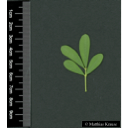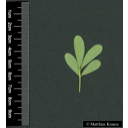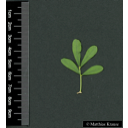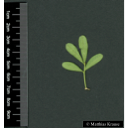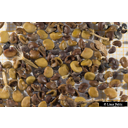Useful information about the taxon (species, subspecies, variety...)
Halimodendron halodendron (Pall.) Voss 1894
Fabaceae (Leguminosae, Papilionaceae)
(APG IV)common salt tree
Taxon concept: The Plant List (2010)
Distribution: Russia; Northern Turkey, Caucasus, Iran, West Siberia, Middle Asia
Size: 1 - 2 (m)
Flowering period: VI - VII
Halimodendron halodendron (Pall.) Voss - Accepted: Halimodendron halodendron (Pall.) Voss bei Zander 2008; Familie: Fabaceae (Leguminosae, Papilionaceae) (Zander 2008)Halimodendron halodendron (Pall.) Voss - Accepted: Halimodendron halodendron (Pall.) Voss bei The Plant List (2010); Familie: Fabaceae (Leguminosae, Papilionaceae) (APG III)Halimodendron halodendron (Pall.) Voss - Accepted: Halimodendron halodendron (Pall.) Voss bei The Plant List (2014), version 1.1; Familie: Fabaceae (Leguminosae, Papilionaceae) (APG III)Halimodendron halodendron (Pall.) Voss - Accepted: Halimodendron halodendron (Pall.) Voss bei The Plant List (2014), version 1.1; Familie: Fabaceae (Leguminosae, Papilionaceae) (APG IV)
- Color of flower
- pink-violet, rarely whitish
- Flowers
- hermaphroditic, zygomorphic, up to 2 cm long flowers
- Flower ecology
- insect-pollinated (entomophilous)
- Life form
- shrub
- Leaves
- paripinnate leaves with oblanceolate, entire leaflets
- Foliage persistence
- deciduous
- Fruits
- black, glabrous, polyspermous, 1.2-1.5 cm long legume
- Soil conditions
- frequently on saline soils
- Root type
- deep-rooted
- Natural occurrence (habitat)
- floodplains, along rivers, aqueduct margins (aryk banks), abandoned irrigated fields
- Comment to ecology
- noxious weed in countries where the species is introduced
- Vegetation typ and synecology (plant community)
- meso-xerophytic tugai vegetation (tugai woodlands); in associations with e.g. liquorice (Glycyrrhiza glabra)
- Constraints according soil conditions
- salt tolerant
- Comments
- thorny stems
- Usage
- as ornamental plant and live fence; suitable for honey production; roots are used as a yellow dye; in desert areas also used as fuel
Pasta, S. et al. (2016): Acer pseudoplatanus in Europe: distribution, habitat, usage and threats. In: San-Miguel-Ayanz, J., de Rigo, D., Caudullo, G., Houston Durrant, T., Mauri, A. (Eds.), European Atlas of Forest Tree Species. Publication Office of the EU, Luxembourg.; The International Plant Names Index (2009). Published on the Internet http://www.ipni.org; Courtesy to IPNI, 2009. Exported from IPNI at date: 2009-09-22 20:17:51;
Diese Webseite verwendet Google Maps, um Karten und Standorte von Pflanzen in den Hohenheimer Gärten anzuzeigen. Dadurch werden unter Umständen Daten an Google weitergeleitet, was mit einer Verarbeitung Ihrer personenbezogenen Daten verbunden sein kann. Die Datenschutzerklärung von Google finden Sie hier: Datenschutzerklärung von Google
| Sex | Standort | Accession number | Planting year | Donation | IPEN | Lat. | Long. |
|---|---|---|---|---|---|---|---|
| Parzelle A | EG-A-020-18110 | 2002 | XX-0-HOH-EG-A-020-18110 | 48,7106135493 | 9,2056303904 |

